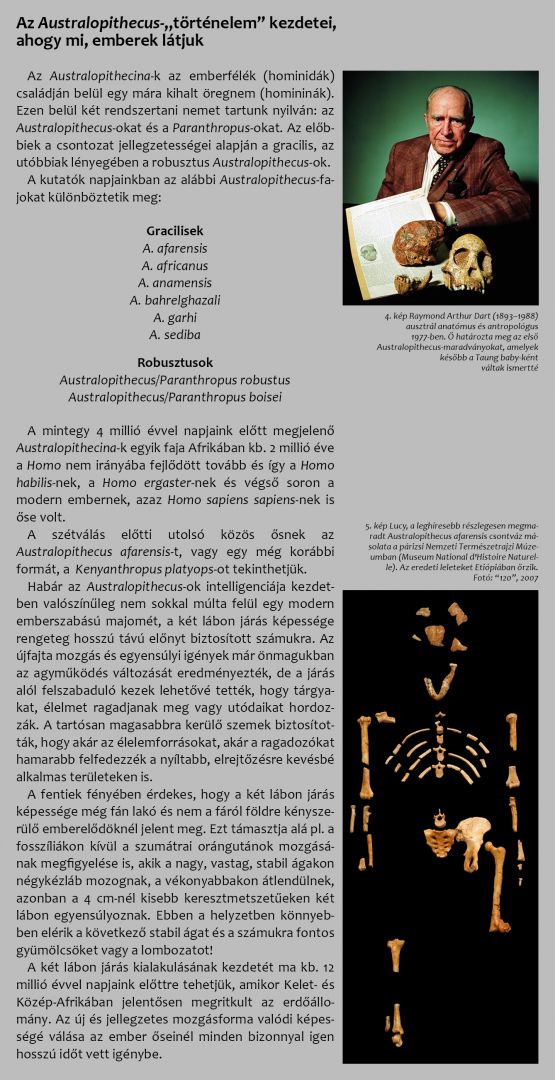THE RUDAPITHECUS AND THE EVOLUTION OF MANKIND - 2. view
Australopithecus
Beginning of Australopithecus “history” seen by us, Humans
Australopithecina is an extinct subtribe of the human clad Hominini.
Within this group, we distinguish two taxonomical genera: Australopithecus and Paranthropus. The former, based on its bone structure, is called the gracile Australopithecines, while the latter is essentially the robust Australopithecines. Researchers distinguish the following Australopithecus species nowadays:
Gracile species
A. afarensis
A. africanus
A. anamensis
A. bahrelghazali
A. garhi
A. sediba
Robust species
Australopithecus/Paranthropus robustus
Australopithecus/Paranthropus boisei
One species of Australopithecina, which appeared 4 million years ago in Africa, evolved towards Homo genus, thus it was an ancestor to Homo habilis, Homo ergaster, and eventually Homo sapiens sapiens.
The last common ancestor before the split is considered to be the Australopithecus afarensi, or the earlier Kenyanthropus platyops.
Though the intelligence of Australopithecines probably did not surpass the intelligence of a modern ape at the beginning, bipedal locomotion provided them with many long-term advantages. On one hand, the new method of locomotion and the need for balance required changes in brain functions, on the other, the hands, freed from quadrupedal walking made it possible to grasp objects or food or carry the offspring. The eyes permanently got relocated to a higher position on the face. It ensured that they discovered predators in more open areas where hiding was harder.
In the light of these, it is interesting that bipedalism already appeared in species that still lived on trees, and not in species that were forced to the ground. Beside fossils, this fact is supported by the observation of Sumatran orangutans’ locomotion. They move on large, thick branches with four legs, swing over between the thinner ones, but balance on two legs on branches thinner than 4 cm in diameter. With this posture, they can reach the next stable branch and potential fruits or foliage much easier!
The start of the development of bipedalism can be dated to approximately 12 million years ago when the forests became fewer in East and Central Africa. Turning the new and characteristic form of motion into a real skill definitely took a really long time for the ancestors of humans.
Fig. 4 Raymond Arthur Dart (1893-1988) Austral anatomist and anthropologist in 1977. He was the first to identify Australopithecus remains, which later became known as the Taung baby.
Fig. 5 Skeleton replica of the most famous, partially preserved Australopithecus afarensis, Lucy, in the National Museum of Natural History, Paris (Museum National d’Histoire Naturelle). The original finds are guarded in Ethiopia. Photo by “120”, 2007
